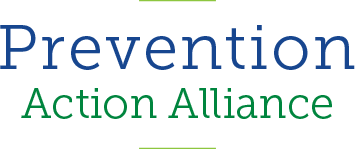Resources For Prevention Advocacy

Fact Sheet: Prevention 101 – Prevention is the act of going “upstream” to learn why a problem is occurring in the first place. It addresses the root causes of an issue, providing systemic solutions to systemic problems. This fact sheet provides a basic overview of prevention for legislators and regulators.
Fact Sheet: What Is Addiction and How Can I Stop It? – Addiction is chronic, complex brain disease that impacts 21 million, or about 1 in 7, Americans. It changes how people think, overriding their other wants and needs. Share information about addiction and its symptoms with this fact sheet.
Fact Sheet: A Case for Prevention in Higher Education – College students face increasing emotional and mental health issues, and colleges and universities are being called upon to promote mental health wellness and prevent substance misuse more than ever. Use this fact sheet to build your case for prevention in higher education settings.
Fact Sheet: Coalitions in Prevention – Coalitions raise awareness of an issue, bring people together around a common goal or project, create solutions that serve the entire community, and seek new partners to participate in that goal. Because of their structure, they’re uniquely suited to engage in prevention. Learn more and share this information by downloading this fact sheet.
Fact Sheet: Prevention Makes Cents – The misuse of alcohol, tobacco, and other drugs costs the U.S. $740 billion annually due to crime, lost work productivity, and health care. If we invested in prevention, we could instead save $99.8 billion and have a healthier, more productive workforce as well as a more vibrant community with better health outcomes for all.
Infographic: 5 Ways Drug Use Impacts Health – Drug use impacts the brain and body in myriad ways. This infographic shows five of those ways, emphasizing harm done to our mental health, lungs, and heart, but also the increased risk of addiction and of contracting various infectious diseases.
Infographic: Prevention Works – Since 2006, the number of young people who drank alcohol has steadily declined from 31.0% to 19.9% in 2017, according to the Monitoring the Future survey. This infographic charts that progress as proof that prevention can, and does, work.
Stigma stops people from getting the help they need. Stigma is the biggest barrier to patients in need of treatment, and stigmatizing terms were championed during the war on drugs. Now, we know more about the science of addiction, and the language we use to describe addiction should now be changed to reflect our greater understanding of it.
The Language First Team, a group of recovery advocates and other professionals passionate about the issue of stigma, created a variety of resources dedicated to choosing our words more carefully when talking about addiction. By changing the language we use to describe addiction, we can de-stigmatize addiction. In turn, patients will regain self-esteem, lawmakers may appropriate more funding for prevention and treatment, doctors may treat patients without the disapproval of their peers, insurers will cover treatment, and people will come to understand addiction as the medical condition that it is.
Words Matter Tool Kit
The following resources are available to help support efforts to de-stigmatize addition
- Words Matter for People with Addictive Disorders – This four-page document gives useful words to say and words that shouldn’t be said when talking about addiction. It also presents the issue of person-first language and substance use disorder for people who are unfamiliar with those concepts.
- Rack Card: Words Matter to Reduce Stigma – This rack card emphasizes the words to use and not use and provides a quick, bulleted overview of addictive disorders and person-first language to emphasize and reinforce the above document’s main points.
- White Paper: Using Person-First Language across the Continuum of Care for Substance Use & Other Addictive Disorders – This white paper explores the issue of substance use disorders and why the language we use to talk about addiction and drug misuse matter. It delves deep into how stigma, reinforced by language, creates challenges for patients.

Advocate for Prevention
